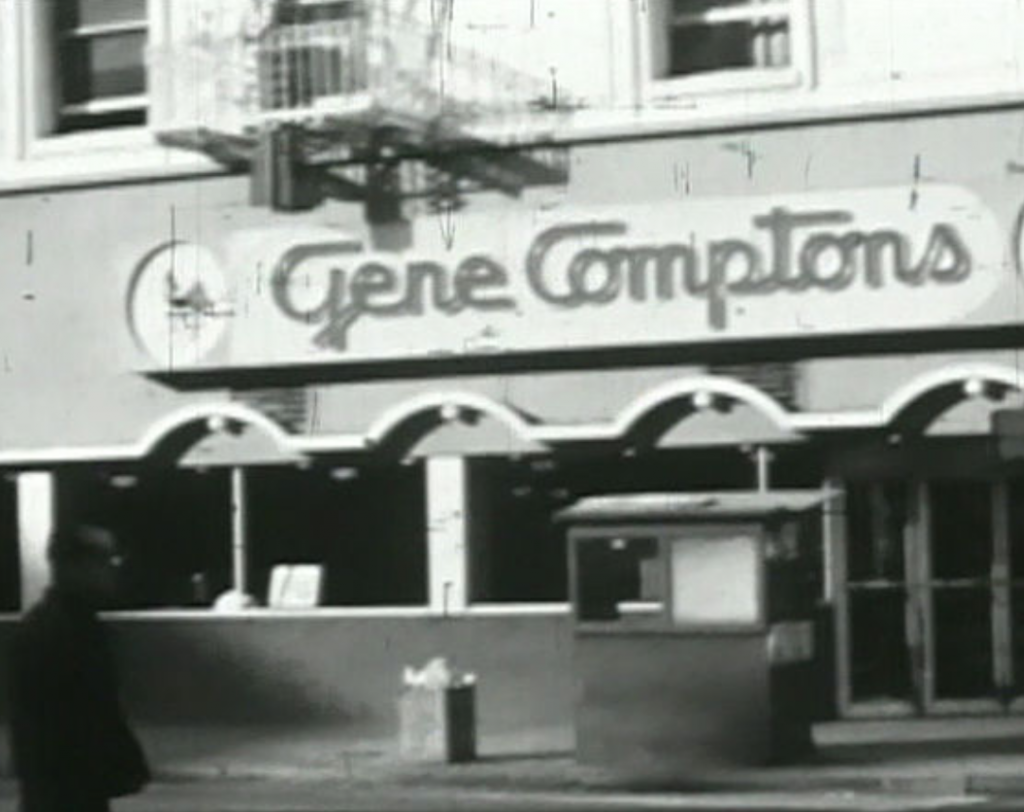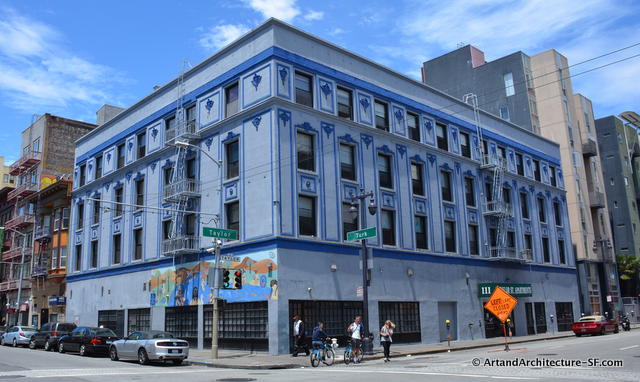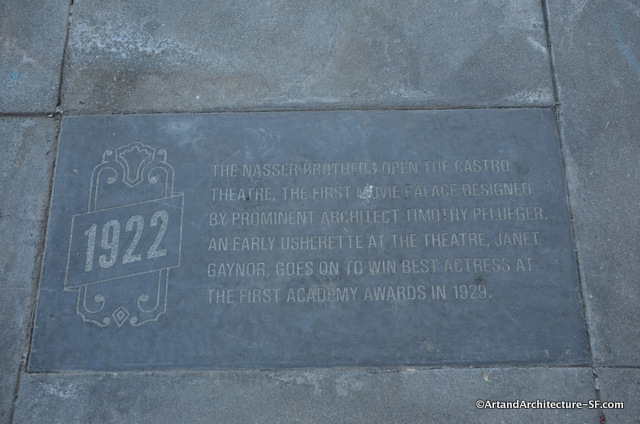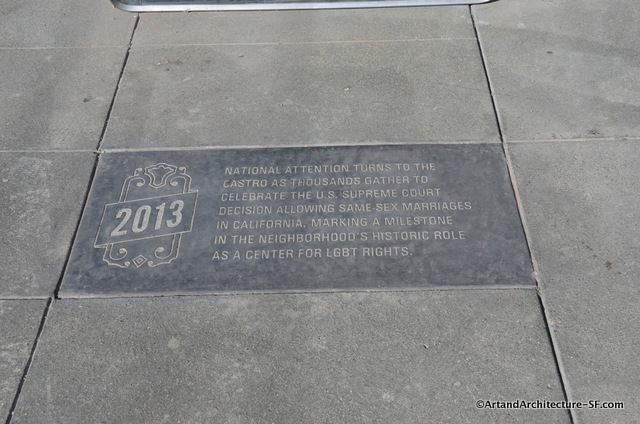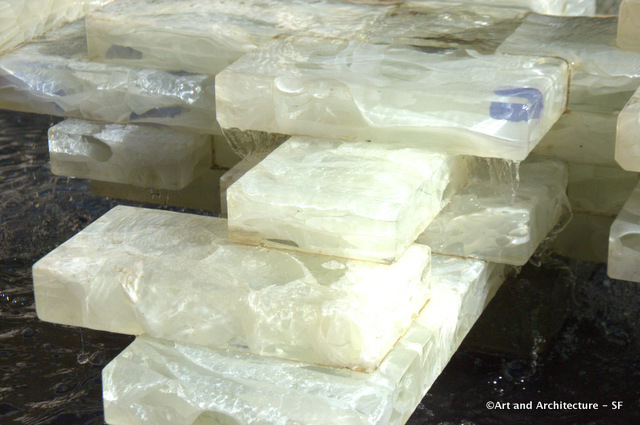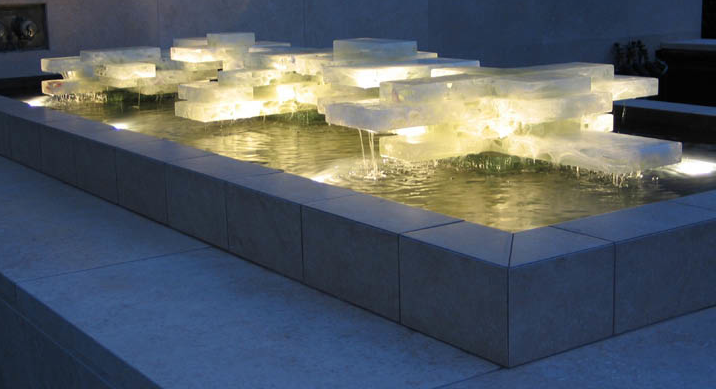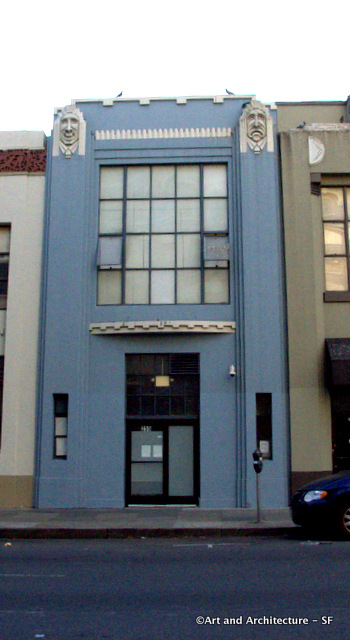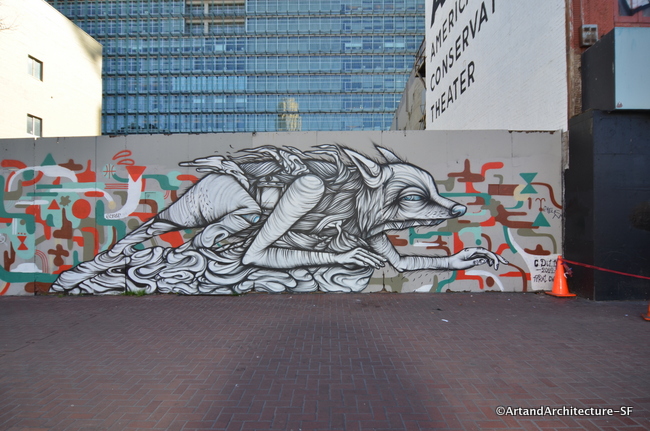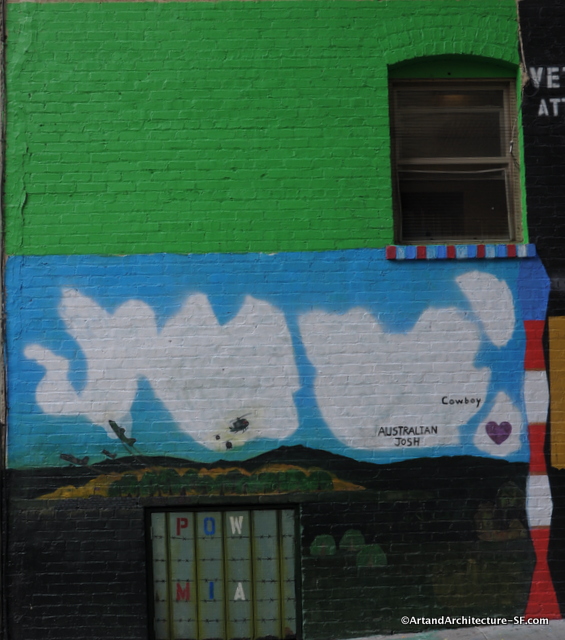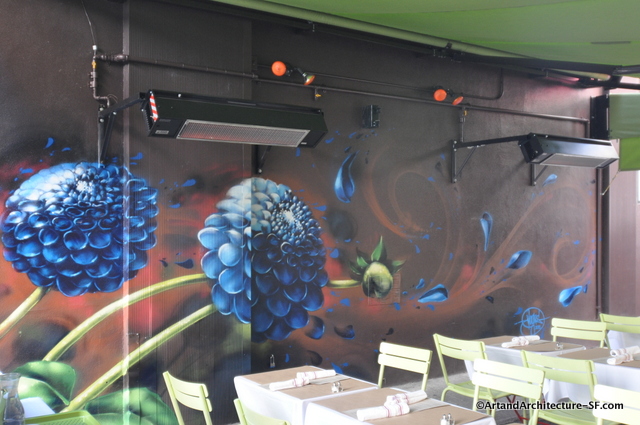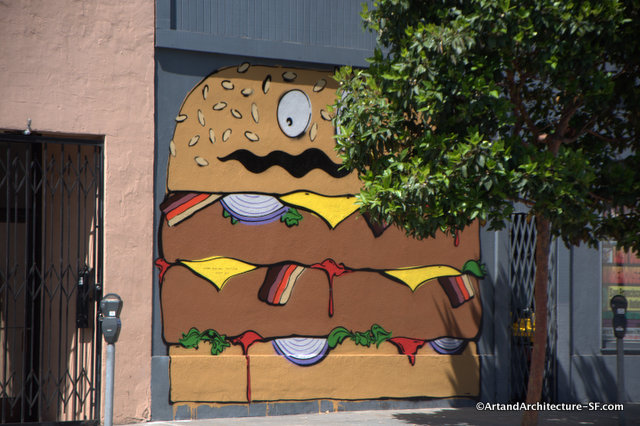Laguna Honda Hospital
375 Laguna Honda Boulevard
Foreshill

Bay Area Foothills by Merle Axelrad Serlin
These collages by Merle Axelrad Serlin are comprised of thousands of small pieces of fabric, fiber, paint and cloth. The fragments are carefully arranged, layered, pinned and sewn together onto a cotton canvas. The artist uses a variety of fabrics including, but not limited to, cotton, linen, rayon, wool, silk, hemp, and tulle. When she is not able to find a piece of fabric that achieves the desired effect, Serlin uses acrylic-based fabric paints to create her own.
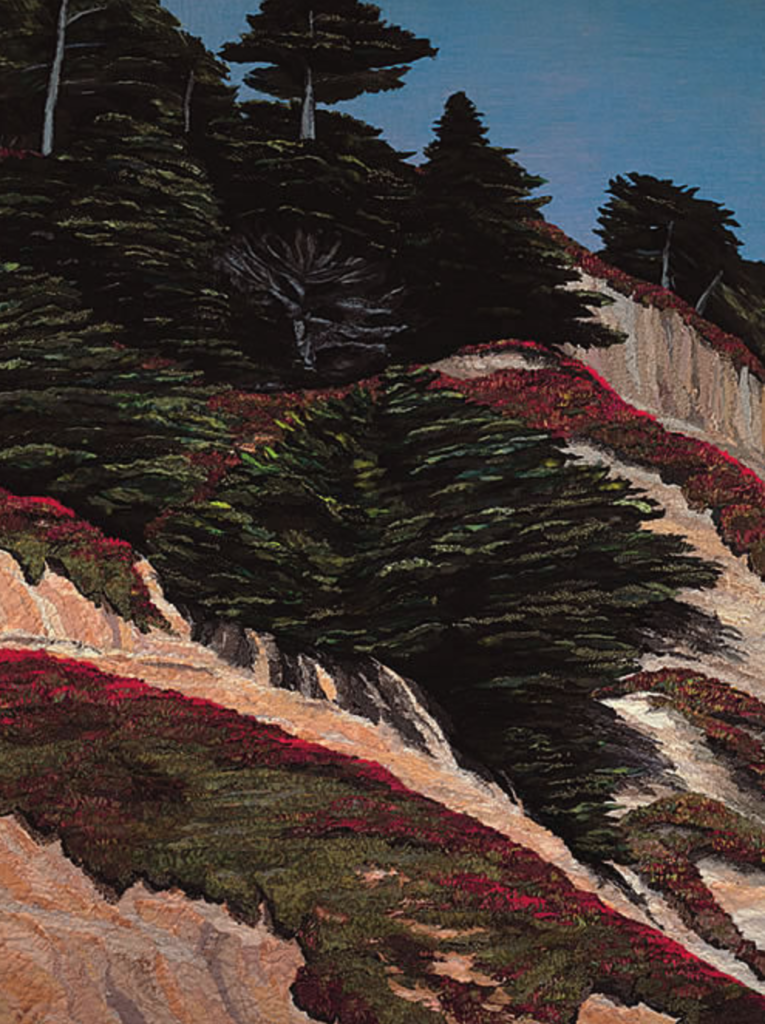
Cliff at Lands End
Merle Axelrad Serlin was a successful and pregnant architect when she made her first quilt, a predictably sewn coverlet of black, gray, pink and green that she finished the day before her son was born. “It was a dog . . . god-awful,” she recalls more than a decade later. But Serlin was clearly a quick study with no dearth of talent. She took a quilting class, won a few awards and switched to quilts as wall art.
With a little tinkering, Serlin developed a layering technique that let her bring more color, light and texture to her projects. She calls it “fabric collage,” and one of her most recent works is a stunning example. In “California Ricelands,” a Sacramento Valley farmscape commissioned by the California Rice Commission, Serlin uses hundreds of pieces of material—some hand-painted or -dyed, others fresh off the bolt from the local fabric store. A golden field is executed in velvety chenille; the flooded paddies are in soothing shades of blue and green.
“People describe this as painting with fabric,” she explains. “But I see it more as a blending of painting and sculpture because it is a three-dimensional medium.” Serlin’s pastime became full time in the late 1990s, when she landed a contract with the California Environmental Protection Agency to complete eight landscapes for the agency’s downtown headquarters, depicting the heights of Mount Shasta to the Monterey Bay Canyon. Other commissions—public, hospital and private—have streamed in ever since. Her studio, on the second floor of the Art Foundry & Gallery at 10th and R streets, opens for Second Saturday every month. – Sacramento Magazine May 2010.

Marin Headlands
The art pieces are behind UV resistant glass and lit from above making photographing them nearly impossible, photos of the art pieces unframed are from the artist’s website.
The budget for the artwork in the new wing of Laguna Honda Hospital was $3million, thanks to the 1% for art program. The budget for these three pieces was $47,000.
Below are photos of the collages, as occurs in many public buildings the artwork takes second fiddle to the handout rack.
 *
* *
*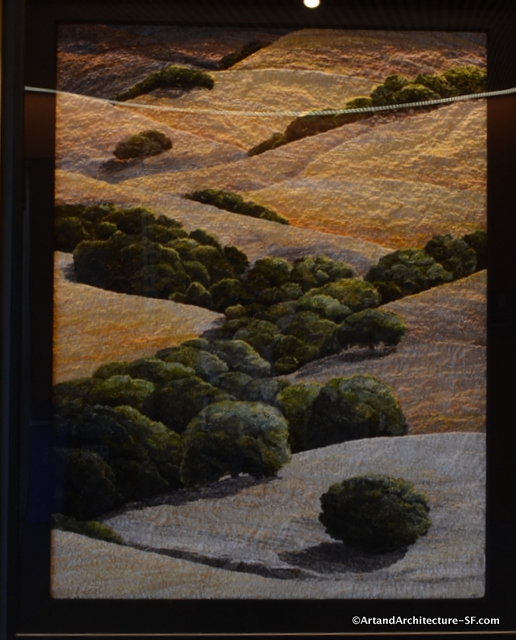
 Viewers look into a periscope-like screen to see a live feed of the other location.
Viewers look into a periscope-like screen to see a live feed of the other location. Saron Paz studied at the Holon Institute of Technology, The Design Academy Eindhoven, and The Sandberg Institute. He is CEO of the design studio
Saron Paz studied at the Holon Institute of Technology, The Design Academy Eindhoven, and The Sandberg Institute. He is CEO of the design studio 


 They represent the fairytale animals from our childhood – a furry innocence, frolicking through idyllic fields. Intrude deliberately evokes this cutesy image, and a strong visual humour, to lure you into the artwork only to reveal the more serious environmental messages in the work. They are huge, the size referencing “the elephant in the room”, the problem, like our environmental impact, big but easily ignored.
They represent the fairytale animals from our childhood – a furry innocence, frolicking through idyllic fields. Intrude deliberately evokes this cutesy image, and a strong visual humour, to lure you into the artwork only to reveal the more serious environmental messages in the work. They are huge, the size referencing “the elephant in the room”, the problem, like our environmental impact, big but easily ignored.


